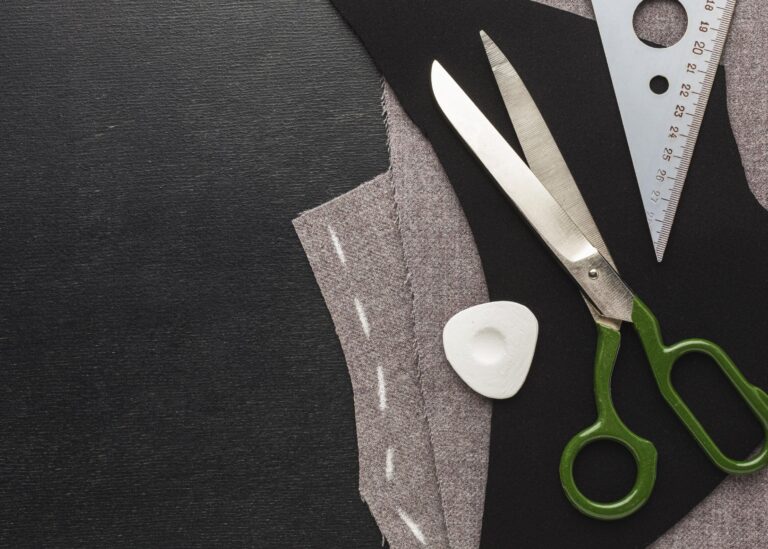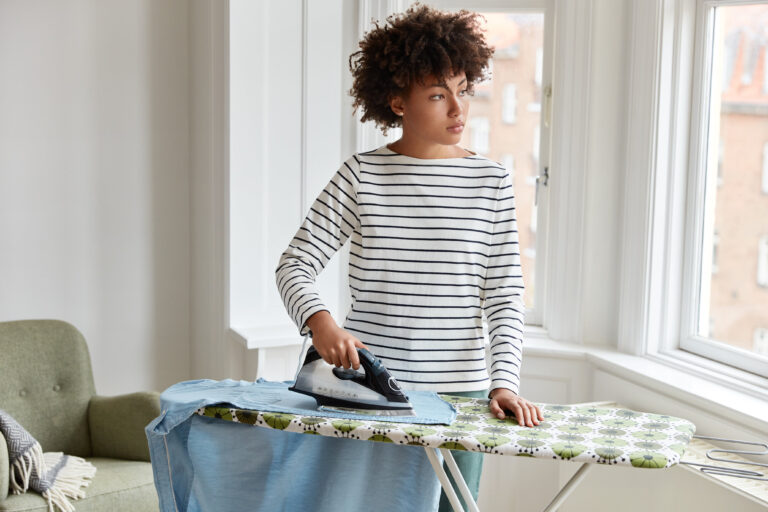Top 15 Sewing Tools You Need For A Complete Starter Toolkit
I have much knowledge about various sewing tools, but these top 15 sewing tools you need for a complete starter toolkit will solve almost all your troubles when it comes to sewing.
You don’t need to stock your toolkit with every sewing accessory ever made as a starting sewer.
Certain sewing tools may not be necessary right initially, depending on the type of sewing projects you begin with.
When you require more equipment, you can add it to your sewing kit. So what sewing supplies should you get first? I’m going to share with you today 15 sewing tools that every toolbox should have.
There are some equipment that are obvious to need, like a sewing machine and a good iron. Of course, you require them now.
What are Sewing Tools?
Sewing tools are the tiny and large tools and equipment used in both machine and hand stitching. Using the right equipment helps speed up and improve the quality of your stitching.
There are two categories of sewing tools: pins and needles.
The following list of 15 sewing supplies will get you off to a great start and get you far in your sewing career.
And unless you lose them, several of these sewing tools don’t need to be purchased frequently or more than once.
When I first started sewing, I attempted to sew without some of the necessary sewing supplies in an effort to save money and what I believed would be time. I came to the conclusion that was incorrect many sewing endeavors later. If I had just made the initial investment in the correct sewing supplies, I could have saved time, money, and effort.
Not every tool on this list will be the best fit for you. The type of sewing tasks you plan to start with will be a major factor. Yet, even if it isn’t on this list, if there is a tool that is crucial to the success of your project, you should invest in it.
Our sewing efforts shouldn’t have a handcrafted appearance. In addition to wanting them to appear professionally crafted, we also wanted the creation process to be enjoyable. You can accomplish that by making the appropriate sewing tool investments for your projects.
Top 15 Sewing Tools You Need For A Complete Starter Toolkit
The 15 sewing tools are as follows:
Hand Sewing Needles
Obviously, Katrina! This hand needle guide from JoAnn Fabric and Craft Stores is something I wanted to share with you even though I know that needles are an obvious instrument for hand sewing.
As you are aware, there are several sizes and applications for hand needles. This helpful tutorial explains the different kinds of needles that are available and how to use them.
You can choose the best needle for your project and the weight of your fabric by being aware of this information.
2. A Needle Threader
The designs of needle threaders range from the quite basic to the most complex, and the majority of them work with both hand needles and sewing machine needles.
But they all have the same function, which is to help us get the thread through the needle’s minuscule eye. Yeah, my buddy, it can be difficult and could take a few tries. and eyewear.
Unless you have a needle threader, you need also have a magnifying lens. You can thread that needle successfully with the aid of the needle threader.
Who doesn’t appreciate a tool that eliminates the need for repeated attempts and eye strain?
The helpful needle guide from JoAnn Fabric and Craft Shops also includes examples of needle threaders.
3. Beeswax
You’ve threaded your needle with ease while stitching a hem with your needle threader (above). After making several stitches and making good progress, the thread begins to tangle.
You are unable to remove that knot no matter what you try. Ugh! What’s next? What happens is that you restart.
Well, you wouldn’t have to start over if you had applied beeswax to your thread.
Beeswax can help to prevent tangles, knots, and the headaches they can bring by coating your thread.
For more hand sewing supplies, like thimbles and needle pullers, check out the convenient needle guide at JoAnn Fabric and Craft Shops.
I personally don’t use them because I’m a left-handed awkward hand sewer, but I’ve heard they keep your fingers from getting cut and prevent pain.
4. Tracing Paper
Most of the time, your fabric will be folded in half, and each piece will require the cutting of two layers of cloth. Naturally, that depends on the product you are producing.
This implies that once the parts have been cut, you must mark the fabric pieces on top and bottom.
Tracing paper can be used to mark both pieces of fabric at once by sandwiching them between the fabric’s bottom layer and your actual tissue or paper pattern.
Several colors of tracing paper are available with a chalky, wax-free texture. You must pick a color that is easy to see since you will be marking the fabric’s wrong side.
Avoid using colors that will show on the right side of light colored materials, especially if you don’t plan to wash or dry clean the fabric before using it.
5. Tracing Wheel
To transfer pattern markings, use tracing wheels and tracing paper. I use a serrated-edged tracing wheel, but you may also find ones with smooth edges.
I like the serrated edge better since, in my perspective, it transfers heavier markings that are more likely to be visible on the fabric’s underside.
6. Chalk, Pencils, and Pens
You can also mark the cloth using pencils, markers, and tailor’s chalk to transfer your pattern. Because both fabric layers will need to be marked separately, it will take a bit longer.
Pens, pencils, or tailor’s chalk are preferred by certain people since the markings are simple to erase. In reality, as long as you don’t iron over it or wash the fabric first, water-soluble ink pens can be readily removed with a damp cloth.
7. Measurement Tape
A tape measure is necessary for every seamstress. I’ve bought so many tape measures throughout the years that I can’t even remember how many there are.
Yet it’s necessary for many additional measurements, including those of you or another person. You won’t need to seek for one if you simply wear one around your neck while stitching.
8. Seam Gauge
The seam gauge is an extremely useful instrument. It’s a useful sewing tool to have nearby your sewing machine or at your ironing board for rapid measurements.
I mostly use it to measure hems because it’s so simple to note the measurement with the small slider and press in your hem as you go.
9. See-Through Ruler with a Straight Edge
For newcomers You will use the 18′′ Dritz ruler a lot, therefore I strongly advise buying one.
With this ruler, marking seam allowances on pattern pieces will be simple, especially for straight lines. You may occasionally require a “see-through” ruler when sewing to make parallel or perpendicular lines.
This ruler is ideal in the situation. It works well for modifying patterns as well. You’ll have it for a long time as long as you take care of it properly and don’t lose it.
10. Straight Pins
In your sewing, pins will be essential. I am aware that some sewing professionals advise against using pins when cutting or sewing. But as a novice, I advise using pins.
They are excellent at holding things in place as you cut and sew and are not the enemy. And the better, the sharper your pins.
11. Pin Cushion
A pin cushion, or pin magnet if you prefer, is essential since it keeps your pins close at hand while you sew.
Also, they prevent your sewing machine’s needles from slipping and sliding out into the floor. Nothing is worse than having to waste your precious sewing time looking for pins or other supplies.
A pin cushion is useful for grabbing a few pins without having to stop what you’re doing, whether it’s next to your sewing machine or on your wrist.
12. Seam Roll
For many years, I sewed without using a seam roll. I use it constantly now. Did you know that when you press your sleeves, there should be no creases?
Who could have known? Moreover, using a seam roll makes it simple to get rid of creases.
13. Ham a La Carte
For pressing regions of your clothing that will suit curved parts of your body, you do really need to use that pressing instrument that resembles a ham.
The rounded shape of the ham makes it easier to shape darts, princess seams, or any other kind of curved seam to make them fit better on your contours.
Because hams are so resilient, you’ll probably only need to purchase them once along with the seam roll mentioned above. Using a DIY method, you may also create your own.
13. Shears
Cutlery for sewing is revered. You can’t pronounce that five times fast, I bet! Because the general public is unaware that sewing scissors should only be used to cut cloth, you must keep them away from your family members.
NOT cardboard, NOT paper, and most certainly NOT packaging. NEVER. You don’t need to explain this to them a thousand times since they will never get it. EVER.
15. Seam Ripper
While you could rip seams with scissors, doing so would take significantly longer than doing it with a seam ripper.
The seam ripper will perform the job so beautifully that you will adore it, but you will also detest it because you will need to use it so frequently.
There are several sizes of seam rippers, and it’s a good idea to carry more than one because they frequently wander off. (Perhaps that explains the situation?
Seam rippers cannot be going missing that frequently.) In terms of necessary tools, I’d rank the seam ripper right up there with the iron and the sewing machine.
You don’t need to stock your toolkit with every sewing accessory ever made as a starting sewer.
Certain sewing tools may not be necessary right initially, depending on the type of sewing projects you begin with.
Conclusion
When you require more equipment, you can add it to your sewing kit. So what sewing supplies should you get first?
I assume this blog post has been able to simplify it by providing you with top 15 sewing tools you need for a complete starter toolkit.
So go ahead to demonstrate it by putting all the information you garner into use.

